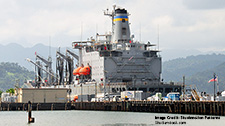AUKUS, Advanced Capabilities and Defense Integration in the Indo-Pacific

Monique Taylor
Nearly two years on from the inception of AUKUS in September 2021, the contours of this strategic partnership have begun to take a more concrete shape. Specifically, the roadmap for Pillar I, which aims to equip Australia with conventionally armed, nuclear-powered submarines (SSN) and develop a new class of SSN, has been released, and there have been further discussions on Pillar II, advanced capabilities. While both pillars support the overarching objective of AUKUS, which is to integrate the defense industrial bases of Australia, the UK, and the U.S., Pillar II in particular reveals its deeper motivation in competing for global pre-eminence in emerging technology. This issue brief examines the aims and strategic rationale of AUKUS, focusing on its pursuit of collective deterrence vis-à-vis China. In doing so, it evaluates some of the opportunities and challenges AUKUS faces moving forward, paying attention to its attempt to develop and equip partners with leading-edge military technologies under a minilateral institutional arrangement.
Related Publications
-
Needed, a Framework to Protect Undersea Cables
In the data-driven world we live in, submarine cables are the arteries that connect nation-states and their people in literally every human activity, including trade, commerce, entertainment, and social interactions. […]
-
Not Drawing a Parallel. Ukraine and Taiwan: An Indian Perspective
Russia’s war against Ukraine has not only had economic, diplomatic, and geopolitical repercussions, but also exaggerated the fear of accelerated conflicts in the Indo-Pacific, a region with several unresolved conflicts […]
-
India-Japan-Philippines: A Strategic Maritime Trilateral or More?
Regional states like India, Japan, and the Philippines have been seeking cooperative solutions with other middle powers that can both counter the Chinese influence and fulfill other economic as well […]
-
The Quad and Submarine Cable Protection in the Indo-Pacific: Policy Recommendations
This policy brief analyzes the Quadrilateral Security Dialogue (Quad) initiative on submarine cables in the Indo-Pacific and offers a timely roadmap as to how best to protect them. It first […]
-
Amid Reports on Chinese Expansion of Bases, Sri Lanka Unveils SOP: Need for a Reality Check?
India has realized it cannot possibly balance China’s growing influence on its own, nor can it afford to have the U.S. leave the Indian Ocean Region (IOR) given China’s significant […]




